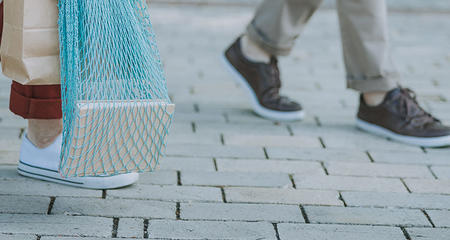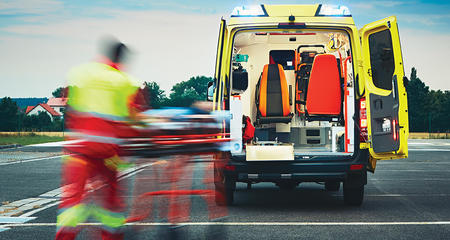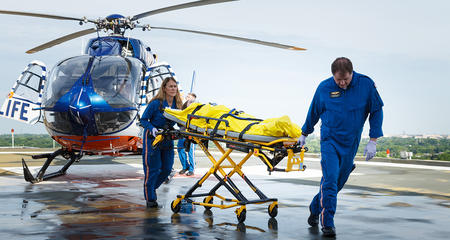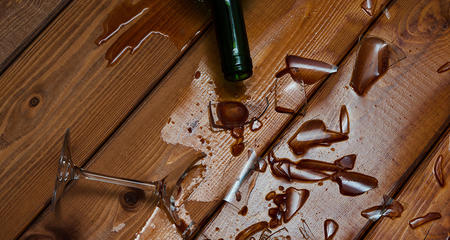Falls are one of the leading causes of injury for older adults in Wisconsin. According to the Centers for Disease Control, Wisconsin leads the nation in deaths resulting from fall-related injuries. For survivors, these injuries can also lead to long-term health problems, reduced quality of life and loss of independence.
Falls and Injuries
The risk of being seriously injured in a fall increases with age.
- The rate of fall injuries for adults age 85 and older is four to five times that of adults age 65-74.
- The rate of fall-related fractures among older adults is more than twice as high for women as for men.
- People age 75 and older who fall are four to five times more likely to be admitted to a long-term care facility for a year or longer.
Fall Prevention Tips
Falls are not just the result of getting older. Many falls can be prevented. By making some changes, you can reduce your risk of falling. For additional tips and local resources, visit mcfpc.net.
- Exercise regularly. Exercise programs such as Tai Chi that increase strength and improve balance are especially good or see a physical therapist for instruction in an exercise program that is specific for you.
- Ask your pharmacist to review your medicines — prescription and over-the counter — to reduce possible side effects and drug interactions. Stay with one pharmacy for all your medication needs. This ensures that the pharmacist knows all the medications you are taking and which medications should not be taken together.
- Have your eyes checked by an eye doctor at least once a year, and make sure the prescription for your glasses or contacts is up-to-date.
- Make sure your home has good lighting.
- Reduce hazards in your home that can cause you to fall. For example, you could trip or slip on:
- Throw rugs that are not tacked down
- Cords, magazines or other objects in walkways
- A bedspread or comforter that hangs down to the floor
- Take your time when walking and moving about.
- Wear supportive shoes that fit well, provide good traction and are secure to the foot. Get more footwear tips for fall prevention.
- When reaching or bending, hold onto a firm support.
- Carry a cell phone or medical alert device at all times indoors and outdoors.
Do you need a device to help you get around (walker, cane, wheelchair, crutches)? Talk to your doctor about the right device prescription, and make sure it is fitted for your height and needs.
How To Get Up After a Fall
First, don’t panic if you fall. Rest on the floor and take a few deep breaths. If help is not available, assess the situation and determine if you are injured. If you are able to move, attempt to bend both of your knees and lay on your side. Once there, get up on one elbow while using the opposite hand to push yourself up — your legs should remain on the ground but your upper body should be raised. From there, try to move into a kneeling position using both of your hands and knees if they’re not injured. Crawl toward a chair or a step, and put your hands on the surface to support you as you get up slowly into a sitting position. If you cannot crawl, scoot backwards towards the surface. If you are not close to a surface that can support you, you can try pushing your back against a wall and using your legs to get into a standing position.
If you can’t get up after falling, call for help. If you have access to a phone, call 911. If you are injured, paramedics will provide medical care and take you to the hospital. Even if you are not injured, paramedics will help you get up from the ground. If a phone is out of reach, try to attract attention by shouting or banging something. Use a medical alert system if you have it.
Be sure to tell your primary care doctor or clinician that you have had a fall.
Programs
The Froedtert & MCW adult Level I Trauma Center offers a free fall prevention program for individuals called Stepping On. In this eight-week workshop, participants learn proven strategies to prevent falls and maintain or regain independence. The program teaches balance and strength exercises, explains how vision problems and some medications contribute to falls. You can also learn to keep from falling at home and in the community, how to get up from a fall and how to eliminate home hazards. Stepping On is proven to build confidence and reduce falls. In-person and virtual courses are offered. Learn more, and register for a class.
Fall prevention presentations are also available for community groups and health care professionals. Presentations are tailored and can include up-to-date fall data, risk factors for falling, effectivefall prevention programs and local resources. For more information or to schedule a presentation, call 414-805-8744.
More to Explore





